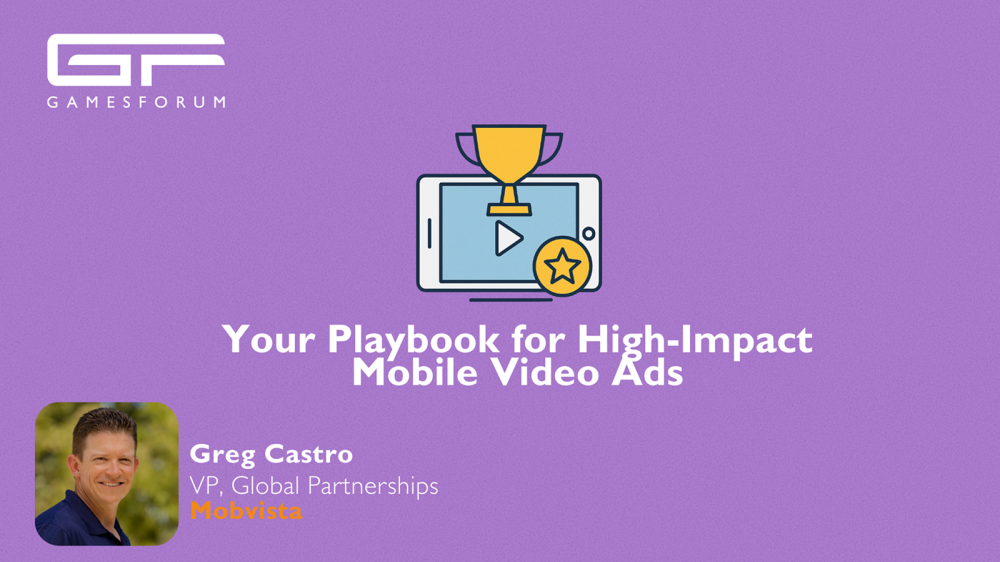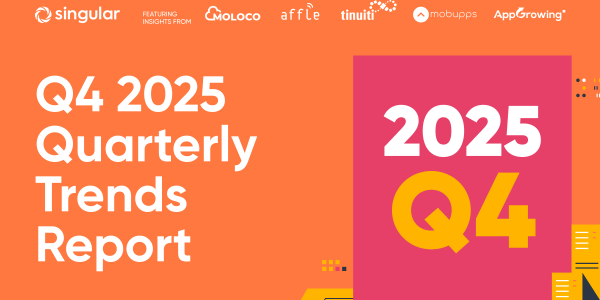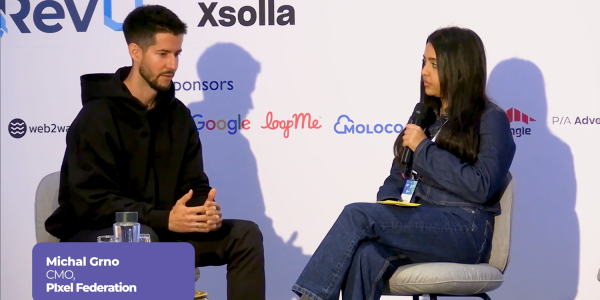Your Playbook for High-Impact Mobile Video Ads

Not all video ads are created equal. Some bug users with incessant noise, visuals, and copy. Others are more thoughtfully crafted, targeting a slightly different audience. However, it's not just the video content that can entice or annoy users, but the format itself.
It's time to break down three of the most popular video ad formats to share practical insights on how to create ads that stop the scroll and drive conversions.
Interstitial Video Ads
Interstitial video ads are full-screen ads that appear at natural transition points within an app, such as between game levels or during content loading. These ads typically run 15–30 seconds and include a skip option after a few seconds.
Because they cover the entire screen, interstitials are ideal for delivering visually rich content that builds awareness and engagement. When placed at the right moment and designed thoughtfully, they create a seamless experience that is neither overly intrusive nor disruptive.
Rewarded Videos
Rewarded video ads are one of the most popular formats in mobile advertising today. They motivate users by offering in-app rewards like extra lives, virtual currency, or premium content, in exchange for watching an ad.
Since viewing is voluntary, users feel more in control, making these ads less disruptive and more engaging. For developers, rewarded videos drive stronger in-app activity and revenue, while advertisers benefit from higher completion rates and more attentive audiences, leading to qualified leads and stronger conversions.
Interactive Ads
Interactive ads turn passive viewing into active participation, creating a two-way conversation with the user. Some of the common interactive ads include swipeable stories,
360-degree product views, and increasingly popular playable ads — which feature full levels of a game within an ad.
Playable ads offer a hands-on experience that is both fun and memorable, allowing users to try before they install, which makes them highly effective at driving conversions. Today, playables are easy to create thanks to ad creative platforms like Playturbo, which offer tools such as our Interactive Video Editor which simplifies the design and publishing process, helping developers to scale creative output more efficiently.
Designing for the Mobile Experience
While it may seem obvious, designing for mobile is fundamentally different from designing for PCs or TVs. You're creating an ad for a small, handheld device that can be used almost anywhere, de-contextualizing the experience. Furthermore, different mobile devices have varying screen sizes, so it's essential to optimize your video sizing and aspect ratio to accommodate your ad campaign.
As silent viewing on mobile devices becomes increasingly common, you may want to reconsider creating video ads that are suitable for sound-on viewing. To compensate for the lack of audio, focus on the visuals and on-screen copy to make an impact. Simple, clear captions work just as well as complex designs. The key is not to overload the screen, as cluttered visuals and excessive text can make the ad difficult to follow and lose its impact.
For example, the e-commerce platform Temu often overlays in its video ads, whether they are mini storylines or simple image carousels. This ensures that, regardless of whether users are watching with sound on or off, the core message and product details are always clear and accessible.
Storytelling to Resonate with Your Audience
Video ads are everywhere, but to make your video ads drive conversions, you should aim to tap into your audience's needs and emotions.
Good video ads don't have to be long or showcase every feature. The most effective ones often tell a brief, engaging story that demonstrates how your app solves a real-world problem or fulfills a need. Storytelling transforms an ordinary video into an experience. It taps into feelings and aspirations, sparking curiosity and inspiring viewers to learn more.
More than just grabbing attention, a good story gives your product a clear voice, helping to build a connection, inspire sharing, and drive meaningful action. Again, the video ads are not about listing features; they are about showing how your app fits into people's lives. Many leading e-commerce platforms use scripted narratives featuring real people to build trust and engagement, and these ads typically combine a narrative twist with detailed product demonstrations.
A common approach is to employ a two-character structure, such as a skeptical buyer and a brand representative, in a dialogue format. This conversational approach not only highlights product benefits but also reinforces credibility by mirroring real customer questions and answers, making the content more relatable and compelling.
Diversify Your Visual Styles
No matter if your app targets a specific user segment or multiple, experimenting with different visual styles can help you reach new audiences. Consider breaking down your app's target segments and determining which features appeal most to each group. For example, the mid-core strategy game Kingshot launched multiple ad variations tailored to distinct player preferences. In one ad, an epic style was featured — made to appeal to SLG gamers who favor power dynamics. Another ad employed a cartoon style, targeting those who enjoy a story-driven experience.
Creating video ads in varied styles not only showcases different aspects of your app but also allows for cost-efficient creative testing across diverse user groups.
Testing Your Way to Success
While it may sound like common sense, don't forget that it's data, not guesswork, that drives successful video ads. You should test various elements, including ad placement timing, different CTAs, and even different versions of the same ad to see which ones get more engagement and conversions. You can also run A/B tests to compare different creative elements, such as gameplay mechanics, visuals, or reward systems, and identify which resonate most with your audience.
Some key metrics to watch include click-through rate, in-ad engagement, conversion rate, and post-install behavior. Use this performance data to refine your ads continuously. Additionally, distributing your ads across multiple platforms can maximize reach and visibility, but you also need to test across various screen sizes and operating systems to ensure a seamless experience for all users.











